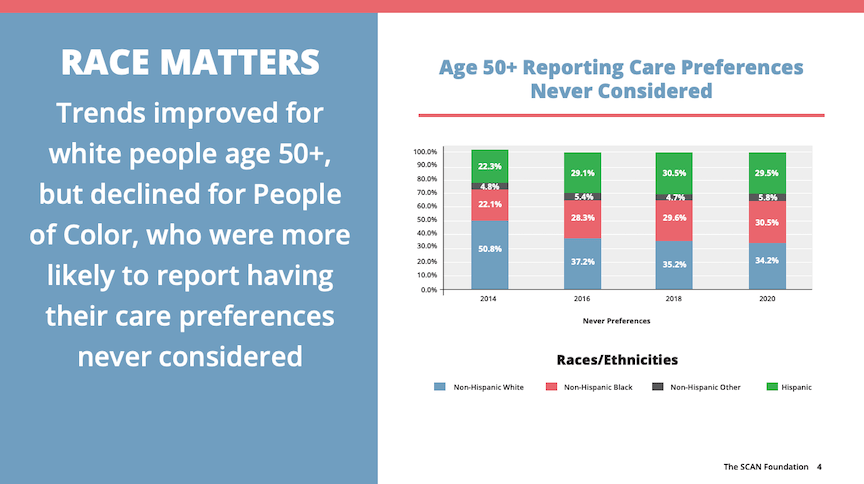Recent data from the LeadingAge LTSS Center @UMass Boston shows that nearly three-fourths of Americans aged 50 and older feel that healthcare providers consider their care preferences, but stark racial and socioeconomic inequities persist. While 83 percent of white adults reported having their care preferences always or usually considered, compared with 52 percent of Hispanic adults and 62 percent of Black adults.
LTSS Center and Community Catalyst researchers conducted the data review for The SCAN Foundation as the first comprehensive look at care preferences since the start of the COVID-19 pandemic. Their analysis revealed that race, income, and geography highly influence people’s care experiences.
“Numerous studies have shown that care that aligns with patient preferences is more effective,” says Marc Cohen, PhD, co-director of the LeadingAge LTSS Center @UMass Boston and research director at Community Catalyst. “The healthcare system has a lot of work to do to address deep-seated inequities in how it listens and responds to patients of color.”
“Ensuring personalized care as individuals age is vital for attaining quality outcomes and ensuring the utmost patient satisfaction,” says Sarita A. Mohanty, MD, MPH, MBA, president and CEO of The SCAN Foundation. “Racial and ethnic disparities in how individuals perceive their care preferences being considered is deeply alarming and unacceptable. When preferences are not asked and respected, suboptimal care results.”
Other findings:
- Income matters. Adults 50+ with household incomes less than $30,000 were less likely to say their care preferences were always or usually considered (66 percent) compared to those with incomes greater than $75,000 (85 percent).
- Geography matters. Adults 50+ in the South were less likely to report care preferences were always or usually considered (72 percent) compared to those in the Northeast (76.4 percent), West (76.5 percent) and Midwest (80 percent).
- Relationships matter. Adults 50+ with a usual source of care (e.g., a primary care doctor) reported an increase in their care preferences being usually or always considered (77 percent in 2020 vs. 70 percent in 2014).


Leave a Reply